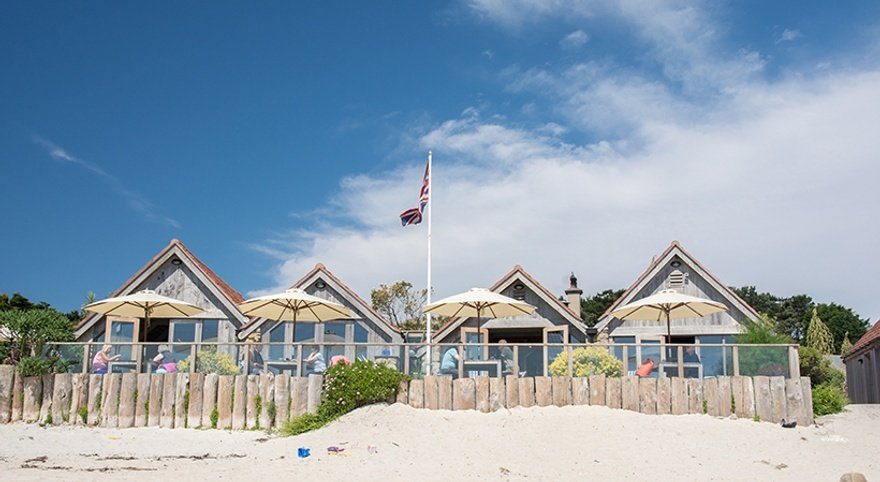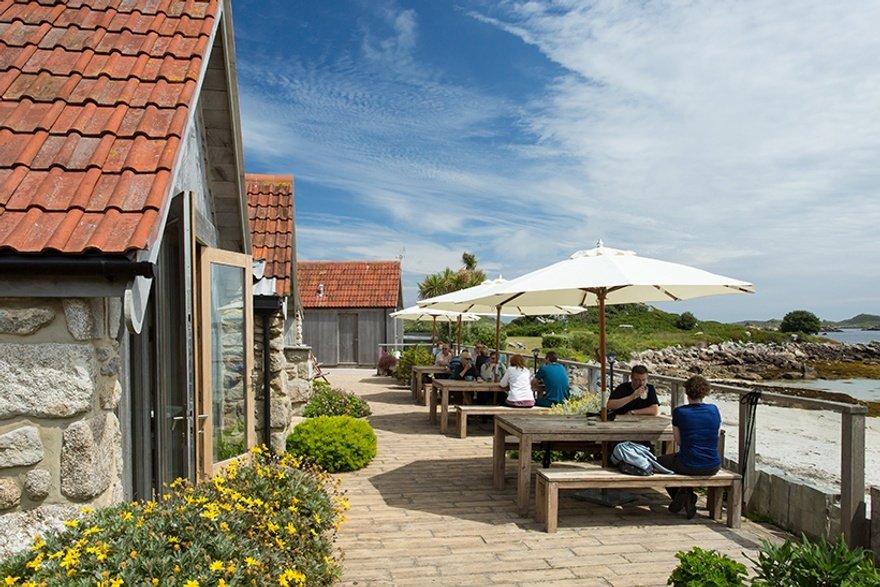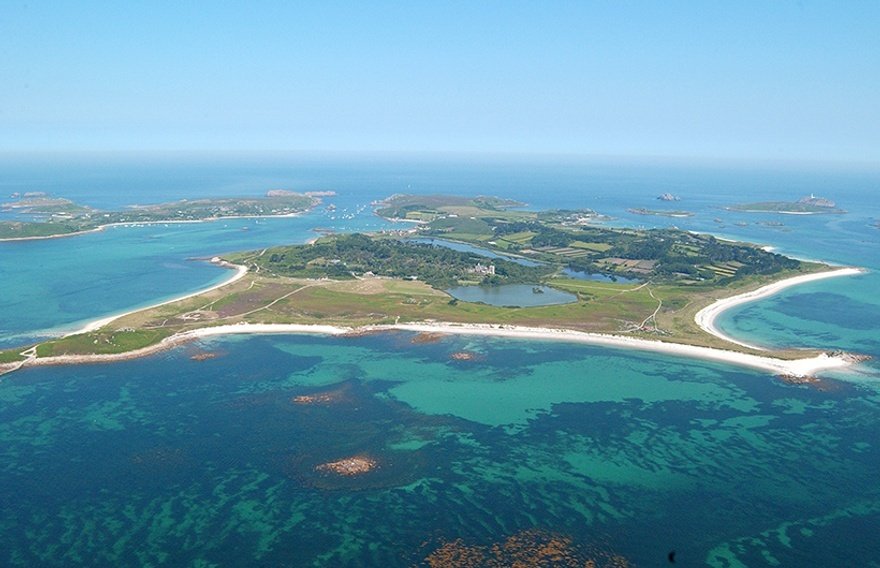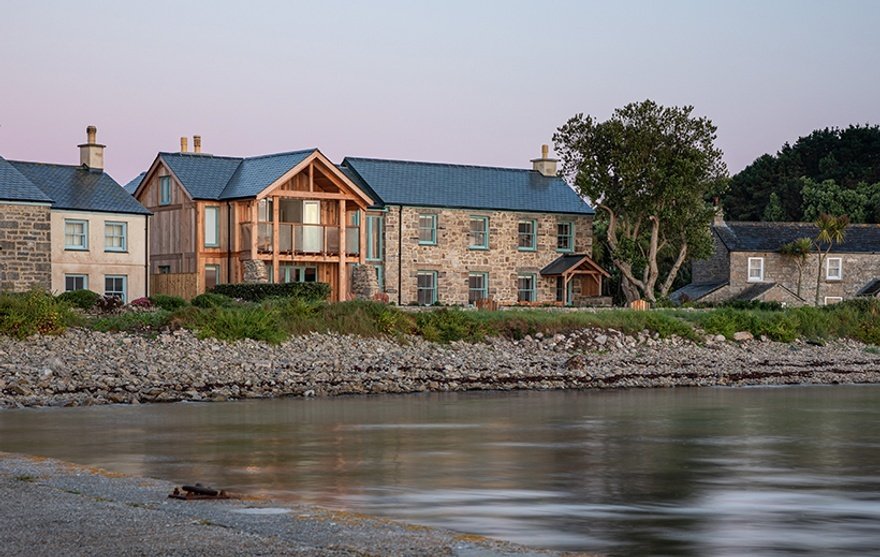The hotelier behind the Tresco Estate on the second-biggest island of the Isles of Scilly tells Amanda Afiya about his diverse role, how the archipelago has been impacted by the pandemic, and why sustainability is key to its strategy.
As chief executive of the Tresco Estate, what does your role encompass?
The role effectively covers anything that has a commercial impact on the estate. Most elements on the island either link directly or indirectly to the business – from the heliport to the boat services, our 102 cottage rentals, the hotel accommodation, restaurants and bars, as well as the farm, engineering, freight and waste management, retail, spa and leisure. My senior management team on the island cover the key areas of finance, marketing, reservations, land management and estate operations.
Accommodation, some weeks of the year, is sold on an advanced rental or island share basis on varying terms – not only does this help to provide a degree of base business, it also helps to sustain and support the island's services. As the largest employer on the Isles of Scilly, the role naturally extends to some involvement in the local economy and I sit on the board of the Islands Partnership, our destination marketing organisation.
Tell me about the island community
This is a living and breathing island community with everything from young families to retired folk. Just as in many villages on the mainland, it has a primary school, a church, a post office and a grocery store, as well as a working farm and services infrastructure. An important part of my role is sustaining a healthy balance between community and business. There's a natural can-do attitude that exists here and it is probably born out of a need to manage support and services ourselves. Whether it's the fire service, coastguard, first responder or recycling waste, the community is the heartbeat of the island and, indeed, a part of the appeal for many visitors who return to experience the magic of the islands every year. Of the 120 people who are permanent residents of the island, approximately 85 of them work for the estate.
There's a natural can-do attitude that exists here and it is probably born out of a need to manage support and services ourselves
What inspired you to take this role? And how has your wife Jilly and children Esmee and Stanley embraced the move?
It was ideal timing in terms of my career, having previously run operations at Biras Creek resort in the British Virgin Islands, before joining Andrew Brownsword Hotels to help develop and grow a family business, as well as more recently rejoining Malmaison and Hotel du Vin in a more corporate role. I've always enjoyed hands-on roles with diversity and so this seemed an ideal opportunity to draw on past experience and unlock the potential for this exclusive, island-based brand.
From a personal point of view, it offered my youngest, Stanley, an amazing opportunity to be educated and grow up in a unique environment. I liked the look of the role and wanted to take it on, but, ultimately, it was always going to be my family who made the final decision. We visited on a soggy weekend late in 2018 and loved it and, to be honest, we haven't really looked back since.
What have you achieved since taking on the role of chief executive?
We have prepared a five-year project plan, including new cottage developments, a stores and delicatessen extension, hotel bedroom refurbishment, the introduction of additional one-bedroom suites, the creation of an alfresco terrace and dining extension to the New Inn, and the development of a separate yoga studio to help grow the wellness market in the shoulder season.
I have repositioned our food and drink proposition by creating a beach-front deli/café at the Flying Boat and focused on home-grown and local produce to support our seasonal menus.
We have also prioritised our sustainability programme – given the momentum we already had from our recycling initiatives – and have introduced electric shuttles for a greener visitor transport on the island.
How have you enhanced the team culture?
Importantly, we now have a clear brand identity and our people are naturally a key part. This has given definition to our culture and makes it easier to consistently interpret the look and feel.
I have given emphasis to a head of people role and we have worked hard to apply structure around induction, training and communication. This is particularly important for the seasonal team that typically joins the operation in March, and it helps them to feel confident and hit the ground running. With somewhere as natural as Tresco, it's always important to ensure it doesn't begin to feel like a resort. Our brand guidelines provide a natural safety net while being very subtle in terms of visibility.
Engagement with Tresco is so strong that we manage to recruit the majority of our seasonal staff through referrals and word of mouth. We ask a lot of our team and the working season requires stamina. That said, if you enjoy the outdoor environment and camaraderie that exists, then you will create memories and friendships that will last a lifetime. It's not unusual for seasonal team members to return each year, or, in some cases, end up settling on the islands.
There are a number of routes to the island – how do you manage transportation?
We manage our own inter-island boating, running two smaller jet boats each with a capacity of 12, as well as two larger vessels with capacities of 75 and 100.
Last year was quite disrupted, but ordinarily the helicopter service flies daily between Penzance on the mainland and the islands of Tresco and neighbouring St Mary's [the largest of the islands]. On the island, we run four electric shuttle buses that are constantly ferrying guests to and from the quays.
Skybus provides flights from mainland airports to St Mary's, and the Scillonian sails throughout the summer season from Penzance to St Mary's. Many visitors also sail themselves to the islands, and, as a result, the moorings round Tresco are usually full for much of the long summer.
How were Tresco's residents affected by the pandemic?
The shock took a while to absorb. We had run a successful recruitment campaign over the winter in 2019 and 2020 and were ready and primed for the season launch with all of our team inducted and trained. With lockdown enforced on the islands, the full impact and potential consequence to livelihoods became clear. As a business, we were quick to draw up contingencies and to establish a nucleus of key workers required to keep the island infrastructure ticking over.
Across Scilly, there was understandable caution and despite the natural environment and space available on our doorsteps, the behaviour was very responsible and quite quickly lockdown inspired solidarity. As the months passed, there was the surreal feeling of being on the islands at the time of year when it would normally be full of visitors. In many respects it was a unique time with the islands so empty and quiet in early summer.
How was business directly affected?
The first lockdown cost us about 30% of our annual revenues. We directly lost about 15 weeks of premium summer trade while still having to manage the costs required to support our island infrastructure.
Like a lot of hospitality, we had to rethink and redefine our business in readiness for reopening. To help with the restrictions, we created pop-up shops and cafés to alleviate congestion. We introduced online shopping at our Tresco grocery. During the summer months, we expanded outdoor dining capacity at our main restaurants and cafés and promoted outdoor wellness with a full programme of yoga and pilates. Our outdoor environment and business modelling meant that we absorbed the visitor numbers and naturally allowed for social distancing.
Having experienced no cases on the Isles of Scilly during the first lockdown, was it nerve-wracking opening to visitors in the summer?
Back in July, before we reopened, there were no reported cases and there were certainly mixed views on opening up. Yes, it was quite a delicate time, not knowing how people would react – but as we got under way and the weeks passed, it was obvious that the vast majority of visitors were respectful and supportive of the measures in place, which in turn relaxed islanders and business operators.
Your team work hard to protect the environment on Tresco. Can you talk me through the environmental initiatives?
This is a key priority for us and probably more so since adjusting to the recent crisis. We live close to nature here and were already sensitive about protecting the environment and managing the human impact to the island. But having a few months during lockdown to really appreciate the unpopulated land and sea on our doorstep, it really hit home. Nature seemed much more evident, with pristine seas and clear skies more appreciably unpolluted; nature seemed to take centre stage and our responsibility to this unique place was reinforced by the impact of the pandemic.
We already have momentum with initiatives such as our food waste management project. Nearly a quarter of all our collected waste is food waste. Rather than having tonnes of rotting waste in bin bags, we reduce the island's waste volume by 80% and feed everything through our biodigester, which cooks the waste over 24 hours, breaking it down into safe, compostable material that we can then use as fertiliser in the Abbey Gardens and our woodland areas.
We collect all of our metal waste, which is crushed and condensed into cubes before being transported to Cornwall, where it is sorted and recycled. All of our glass waste is crushed and recycled on the island and ends up being used in improving our roads and building projects, and our cooking oil is shipped to the mainland to be made into biodiesel.
We have also embarked on an investment programme to move to electric vehicles wherever possible. It's largely a vehicle-free island, with bicycles as the main mode of transport, but we do have a number of works vehicles and shuttles for transporting guests. The aim is to replace all of these with electric options. We are about halfway through this programme, with other exciting options ahead, such as to be able to generate our own electricity.
What plans do you have for 2021, and are you positive about the future?
We've lost a year, so in reality many of the plans we'd lined up for 2020 probably apply for 2021. It's obviously difficult to predict how restrictions associated with the pandemic will impact on trade, but looking ahead to the autumn, we are planning the redevelopment of the New Inn, as that was originally scheduled for winter 2020.
Career to date
Having embarked on a four-year management training scheme with the Savoy Group in the mid 1980s, Nick Halliday went on to travel the globe, working in some of the world's most beautiful locations in the British Virgin Islands, Bali and Canada.
He returned to the UK in 1999 and joined Malmaison as a general manager in Newcastle. Five years later, he moved to Abode Hotels and Michael Caines Restaurants and worked alongside Andrew Brownsword and chef Michael Caines in developing the brands. He was made managing director in 2006.
In 2014, he joined Hotel du Vin as chief operating officer. During his four-year tenure, the business was sold, along with the Malmaison portfolio, by KSL Capital Partners to Frasers Hospitality.
In 2018, Halliday left Hotel du Vin and launched a consultancy business, Stand Out Hospitality, where he managed a number of London-based projects for clients. At the end of that year, he was invited to take up the role of chief executive of Tresco and joined the estate in early 2019.
The Isles of Scilly
The Isles of Scilly are an archipelago situated 25 miles off the southwestern tip of Cornwall. Its primary islands are St Mary's, Tresco, St Martin's, St Agnes and Bryher.
The Duchy of Cornwall owns most of the freehold land on the islands, and tourism is a principal part of the local economy.
Tresco is leased to the Dorrien-Smith estate, which runs it as a timeshare and hospitality business. The Dorrien-Smith family, descended from Augustus John Smith, who was lord proprietor of the Isles of Scilly for over 30 years during the mid-1800s, was largely responsible for the economy of the islands as it is today.
Continue reading
You need to be a premium member to view this. Subscribe from just 99p per week.
Already subscribed? Log In









